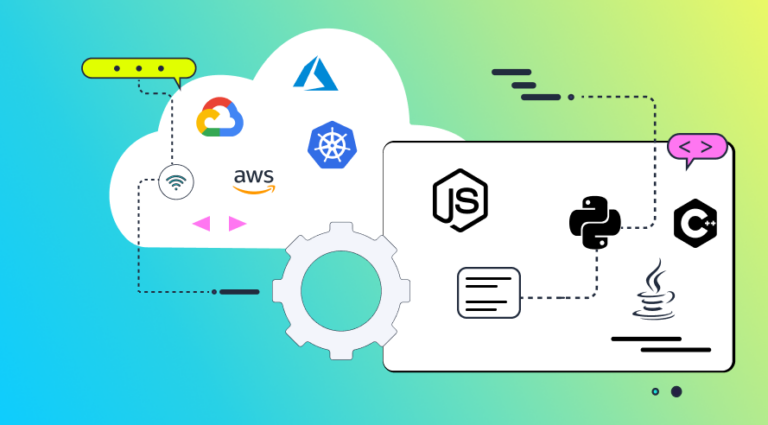Observability and security are converging, benefiting dev and security teams. Runtime observability is the missing component to this important endeavor, providing much-needed data and insights to DevSecOps and AppSec teams.
The Challenge: A Fragmented and Siloed Approach
In today’s cloud-native landscape, comprehensively securing applications is becoming increasingly complex. Organizations are finding themselves juggling multiple specialized tools from multiple vendors, each designed with a narrow focus and often without the developer’s workflow in mind.
The result of this fragmented approach is isolated risk assessments. But these “risk lists” lack the necessary context for effective and accurate risk prioritization and often even contain false positives. Excessive alerts are wasting developers’ time and creating friction between security and dev teams.
Here’s a breakdown of this widespread challenge:
Lack of Context
- Data Silos: Each specialized tool typically operates in isolation, creating data silos where security information is scattered across different platforms and systems, with little or no integrations.
- Limited Visibility: The lack of integration results in limited visibility into the overall security posture, making it challenging to identify cross-domain threats or understand the full impact of vulnerabilities. Not having a holistic view means there is no security context, which delays, complicates and impacts the quality of incident response efforts.
Complexity
- Tool Integration: Integrating multiple specialized tools requires custom scripts or middleware to bridge the gap between them. This is complex and time-consuming, requiring budgets and security and technical professionals.
- Configuration Overhead: Even after the integration, the work is not done. Managing, maintaining, configuring and updating each tool separately adds overhead, increasing the risk of misconfigurations and errors. In addition, brittle integrations might introduce latency and data inconsistency issues, as well as security vulnerabilities.
Alert Fatigue
- Overwhelming Alerts: The use of multiple tools can generate a high volume of security alerts and notifications, since each tool is alerting independently. There is no holistic prioritization or removal of duplicates. This can overwhelm security teams, leading to alert fatigue and potentially causing important security events to be missed.
Friction Between Teams
- Security vs. Dev: Lack of a holistic security posture and centralized management of vulnerabilities creates friction between security teams, which prioritize risk mitigation, and Dev teams, which prioritize rapid development and deployment. Dev teams may view certain security tools and the need to fix vulnerabilities as obstacles to their agility.
Observability Meets Security
These are ubiquitous challenges, and the industry has been fairly quick to respond. According to Gartner, organizations are looking to consolidate their security vendors to simplify operations and eliminate redundancy. By consolidating and more tightly integrating security tools, for example through API-driven integrations that automate data sharing and streamline incident response, organizations not only reduce overhard, they also benefit from improved overall context.
Such holistic context can enable deeper contextual analysis of security events and vulnerabilities with respect to the entire cloud environment. By providing relevant information about how the package is used or how the function is invoked, security teams and all stakeholders should be able to better understand and prioritize remediation efforts, as opposed to operating in the dark.
Another way to gain context is by leveraging observability data for security purposes. The valuable data collected from observability tools is only used by DevOps or engineering teams. By feeding this data into a single, highly scalable platform, DevOps, security, and engineering teams will be able to gain contextual visibility into their environment without any blind spots.
This end-to-end view of their data will enable teams to triage alerts and static code vulnerabilities, and conduct rapid forensics investigations following attempted attacks and runtime taint analysis to understand the organization’s risk posture more precisely.
According to the report “The Business Case for Unifying Security and Observability” by Enterprise Strategy Group (ESG), 55% of IT and security professionals say that observability can provide them with a better understanding of vulnerabilities and their business impact. For example, with observability they can easily analyze and prioritze SCA alerts, understand existing attack paths, reveal new ones and assess system loads.
In fact, we’re already witnessing a fundamental shift in the roles and responsibilities of dev, IT and security teams. It is happening. Observability and security tools are joining forces, unifying and converging.
How the Market is Responding
To answer this industry-wide need of consolidated data collection that will support security and dev teams, observability and security players have begun expanding their offerings with an all-inclusive security-observability one. A growing number of observability players have begun offering security solutions, like some of the leading APM and production monitoring vendors. This not only adds another layer of value to their existing solutions and expands their offering to security personnel, it also answers the pain point their dev users are experiencing when communicating with security teams.
At the same time, security vendors are also starting to look at observability as a potential expansion and growth lever. By integrating observability features into their security platforms, they can also offer an all-encompassing approach to security teams, helping them prioritize alerts and explain to developers why it’s important to address these risks.
These expanded offerings are having a positive and tangible influence across the board. The ESG report finds that the remediation capabilities of observability tools have enabled 51% of teams to respond and act on security issues faster.
There is also a positive cultural impact for DevSecOps. Traditionally, these teams have found themselves in a reactive stance, scrambling to respond to security alerts and incidents as they come in. However, the integration of observability features into security platforms is changing this dynamic.
By offering a line of sight into runtime, networks and architectures, these unified tools are enabling DevSecOps teams to adopt a proactive approach. DevSecOps teams can now use observability data to conduct investigations and identify risks before they escalate and turn into breaches. This enhances the efficiency of security operations and the resilience of the network.
Observability and Security: Two Sides of the same Coin
The convergence between observability and security seems almost natural. This is because both disciplines share the same principles and they can both benefit each other.
As mentioned, the volume of data has created an overwhelming flood of alerts that lack the necessary context for effective action. This has made the task of distinguishing genuine security threats from false alarms, like those unintentionally created by SCA tools, similar to finding a needle in a haystack (pardon the overused cliché). This is very similar to the challenge engineers are dealing with, when they need to trace an error and have too many logs and traces to sift through. In both cases there is a need to reduce MTTR and increase engineering productivity.
In both disciplines, context and breaking silos plays a critical role, enabling faster troubleshooting for developers and effective prioritization in security. Both worlds are also “shifting left”, starting processes as early as possible in the SDLC. Visibility also serves as a foundational element in both, for remediation and resolution. Finally, silos plague both domains, preventing AppSec teams from extracting maximum data and value. Observability is the approach that can answer these challenges.














